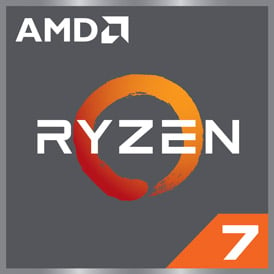
Fastest integrated graphics ever - leaderboard 2024
We have collected the fastest processors with integrated graphics for you in this constantly updated list of the best. The graphics unit of these CPUs has enough power for modern games in medium resolutions or details.Find the best processor
It's not always easy to find the best processor for your needs. While many visitors only pay attention to the theoretical speed of a processor, others want to read detailed test reports that also deal with the processor's speed in practice. Therefore, we have collected a large number of benchmarks in order to meet as many requirements as possible.We have not only listed our results for you in map form at the top of this page, but also in a clear table at the bottom of this page. So everyone can quickly find their way around and find the best processor for themselves.
Advantages of a fast iGPU
The advantages of fast integrated graphics are obvious: many games can be played smoothly even without using an additional (dedicated) graphics card. In addition, the computing power in professional applications in CAD or photography is greatly improved. A fast iGPU should not be underestimated, even if a dedicated graphics card is currently significantly faster.Incidentally, the speed of a fast integrated graphics in a processor depends very much on the speed with which the processor connects the main memory. Modern processors usually use LPDDR5 memory for this. LPDDR memory is particularly efficient because it works with a reduced electrical voltage. In the end, this is where memory bandwidth has the biggest impact on integrated graphics performance.
List of the fastest iGPUs
In this list we have once again collected the processors with the fastest integrated graphics of all time for you. The list is sorted by the theoretical FP32 performance of the iGPU computing power in single precision. The processors are almost exclusively mobile processors, since desktop processors can usually be equipped with a dedicated graphics card at lower cost.| Processor | Socket | TDP | Memory | ||
| Apple M2 Ultra (76-GPU) 24C 24T @ 0.66 GHz |
N/A | 80 W | LPDDR5-6400 | ||
| Apple M2 Ultra (60-GPU) 24C 24T @ 0.66 GHz |
N/A | 80 W | LPDDR5-6400 | ||
| Apple M1 Ultra (64-GPU) 20C 20T @ 0.60 GHz |
N/A | 60 W | LPDDR5-6400 | ||
| Apple M1 Ultra (48-GPU) 20C 20T @ 0.60 GHz |
N/A | 60 W | LPDDR5-6400 | ||
| Apple M3 Max (16-CPU 40-GPU) 16C 16T @ 0.70 GHz |
N/A | 57 W | LPDDR5-6400 | ||
| Apple M2 Max (38-GPU) 12C 12T @ 0.66 GHz |
N/A | 40 W | LPDDR5-6400 | ||
| Microsoft XBox Series X 8C 16T @ 3.20 GHz |
BGA | 65 W | GDDR6 | ||
| Apple M2 Max (30-GPU) 12C 12T @ 0.66 GHz |
N/A | 45 W | LPDDR5-6400 | ||
| Apple M3 Max (14-CPU 30-GPU) 14C 14T @ 0.70 GHz |
N/A | 50 W | LPDDR5-6400 | ||
| Apple M1 Max (32-GPU) 10C 10T @ 0.60 GHz |
N/A | 45 W | LPDDR5-6400 | ||
| Sony Playstation 5 8C 16T @ 3.00 GHz |
BGA | 65 W | GDDR6 | ||
| Apple M1 Max (24-GPU) 10C 10T @ 0.60 GHz |
N/A | 45 W | LPDDR5-6400 | ||
| Apple M2 Pro (12-CPU 19-GPU) 12C 12T @ 0.66 GHz |
N/A | 40 W | LPDDR5-6400 | ||
| Apple M3 Pro (12-CPU 18-GPU) 12C 12T @ 0.70 GHz |
N/A | 35 W | LPDDR5-6400 | ||
| Apple M2 Pro (10-CPU 16-GPU) 10C 10T @ 0.66 GHz |
N/A | 30 W | LPDDR5-6400 | ||
| Apple M1 Pro (10-CPU 16-GPU) 10C 10T @ 0.60 GHz |
N/A | 45 W | LPDDR5-6400 |
back to index





